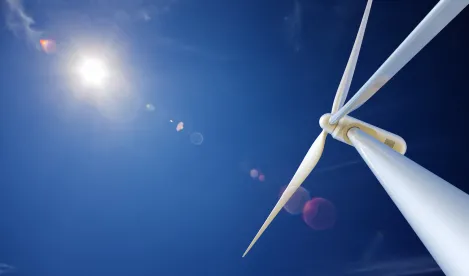The Biden administration’s commitment to the development of offshore wind as an alternative energy source is bearing tangible results. In May, the administration gave final approval to Vineyard Wind, the first US offshore wind project of industrial scale. Several leases have now been granted or are in active negotiation, primarily in the Northeast, and serious studies are being made of the potential for offshore wind installations in the Gulf of Mexico. It is expected that additional US offshore wind projects will be approved without delays.
Late last year, Congress amended Section 4(a) of the Outer Continental Shelf Lands Act to provide that federal laws extend to “(iii) installations and other devices permanently or temporarily attached to the seabed, which may be erected thereon for the purpose of exploring for, developing, or producing resources, including non-mineral energy resources . . . .” (emphasis added). In a recent ruling following this amendment, US Customs and Border Protection has construed this language to find that a jack-up vessel would become a coastwise point when attached to the seabed of the Outer Continental Shelf for the purpose of installing or constructing a structure to be used for the production of wind energy.
As a result, the wide variety of vessels that carry the materials, equipment, and personnel used to build, maintain, service, and repair such offshore wind facilities will be required, among other things, to be built in the United States (with limited inclusion of foreign materials or components) and to meet requirements for US citizen ownership. Since the construction of vessels in the United States is typically capital intensive, obtaining sufficient financing for such construction is frequently viewed as a challenge.
As with other vessels that engage in the US coastwise trade, there are methods of financing available for vessels used in offshore wind that are sometimes overlooked. For example, conventional loan financing can be obtained from foreign lenders, and these loans can be secured by ship mortgages that have preferred status under US law. This can be particularly useful in the offshore wind context. Offshore wind energy generation has long been extensively used in other countries, especially in Europe, and many European companies are currently involved in designing, planning and equipping offshore wind facilities in US waters. As a result, financial institutions in Europe and in other countries are familiar with investing in offshore wind projects and are comfortable making similar investments as the offshore wind industry gets underway here.
There is also a special provision in US law that allows for foreign financial institutions to provide lease financing for vessels engaged in US trade under certain specified conditions. For example, Dominion Energy is leading a consortium of industry participants in the construction of the first Jones Act-compliant offshore wind turbine installation vessel, to be built at the Keppel AmFELS shipyard in Brownsville, Texas. It was announced that the $500 million cost of the project is being financed by a lease financing agreement with leading global banks.
Loan guarantees by the US government are available through a program originally established under Title XI of the Merchant Marine Act of 1936 administered by the Maritime Administration (MARAD) within the US Department of Transportation. If all the program’s requirements are met, loans can be provided by the Federal Financing Bank, a US government corporation created by Congress in 1973 under the supervision of the Secretary of the Treasury. These loans are guaranteed by the “full faith and credit of the United States” and, as a result, the loans typically have lower rates and more flexible terms than a borrower would be able to obtain in the open market based on its own credit. For eligible vessels, the loan can be for up to 87.5% of the cost of the vessel, can have a term of up to 25 years, and will have an interest rate based on 10-year Treasury notes.
In general, the borrower needs to be a US citizen or corporation, partnership, or other business; needs to demonstrate ability and experience with the vessel or vessels to be constructed; and needs to have sufficient creditworthiness. One obstacle that parties should consider in seeking MARAD approval is the requirement that an applicant demonstrate the “economic soundness” of a proposed project. MARAD will review the market potential for the employment of a vessel, including utilization and availability of long-term charters. In the US offshore wind space, the length of available charters will depend on the type of vessel and will likely be longer for operational vessels (such as service operation vessels and crew transport vessels) than they would be for construction vessels (such as a wind turbine installation vessel).
An example of the use of Title XI financing is the application submitted by Win Wind LLC for the construction of a service operation vessel (SOV) at Tampa Ship LLC in Tampa, Florida, an affiliate of Edison Chouest Offshore where the SOV will be used to transfer technicians and spare parts for the operation and maintenance of the wind turbine installations at the Revolution, South Fork, and Sunrise Wind wind farms in the Northeast. The estimated cost of the vessel is $81.2 million and the requested guarantee is for 85% of that amount, or $69.02 million, for a 15-year loan. The information available on the MARAD website as of October 6, 2021, is that the application has been received and is being reviewed for completeness. More information on the Title XI program is available on the MARAD website.




 />i
/>i

